Cambodia’s period of prosperity ended after the fall of Angkor. What was once one of the richest kingdoms in the world fell into a series of civil wars, poverty and was also victim of genocide.
On April 7, 1975, the Khmer Rouge, led by Pol Pot, took control of Phnom Penh and Cambodia as a whole. The Khmer Rouge troops invaded Phnom Penh, dismantled families and sent them to communal farms across the country. They shut down schools, hospitals, and spread a wave of terror within the population. In less than 3 days, Phnom Penh was deserted, like a ghost town. There are really no words to describe the atrocities that occurred in the next four years. Saying that it was a dark and incredibly painful period for the Khmer would be an understatement.
We had the opportunity to visit two sites that serve as memorials the Khmer Rouge period in Cambodia and showed us a little bit of the terrible things that happened here.
Tuol Sleng (S-21 Prison) Genocide Museum
Tuol Sleng was a high school in the heart of Phnom Penh until 1975, when the Khmer Rouge invaded and took over. Tuol Sleng was then turned into a security prison, which was used to interrogate, torture and kill “enemies” of the state (Angkar). Pol Pot envisioned a “pure” communist society led by the peasant class; thus educated individuals, city dwellers, monks and nuns were all threats to the Angkar. He built an army of young men from the countryside who blindly followed his promises of a better life once society became “pure.”
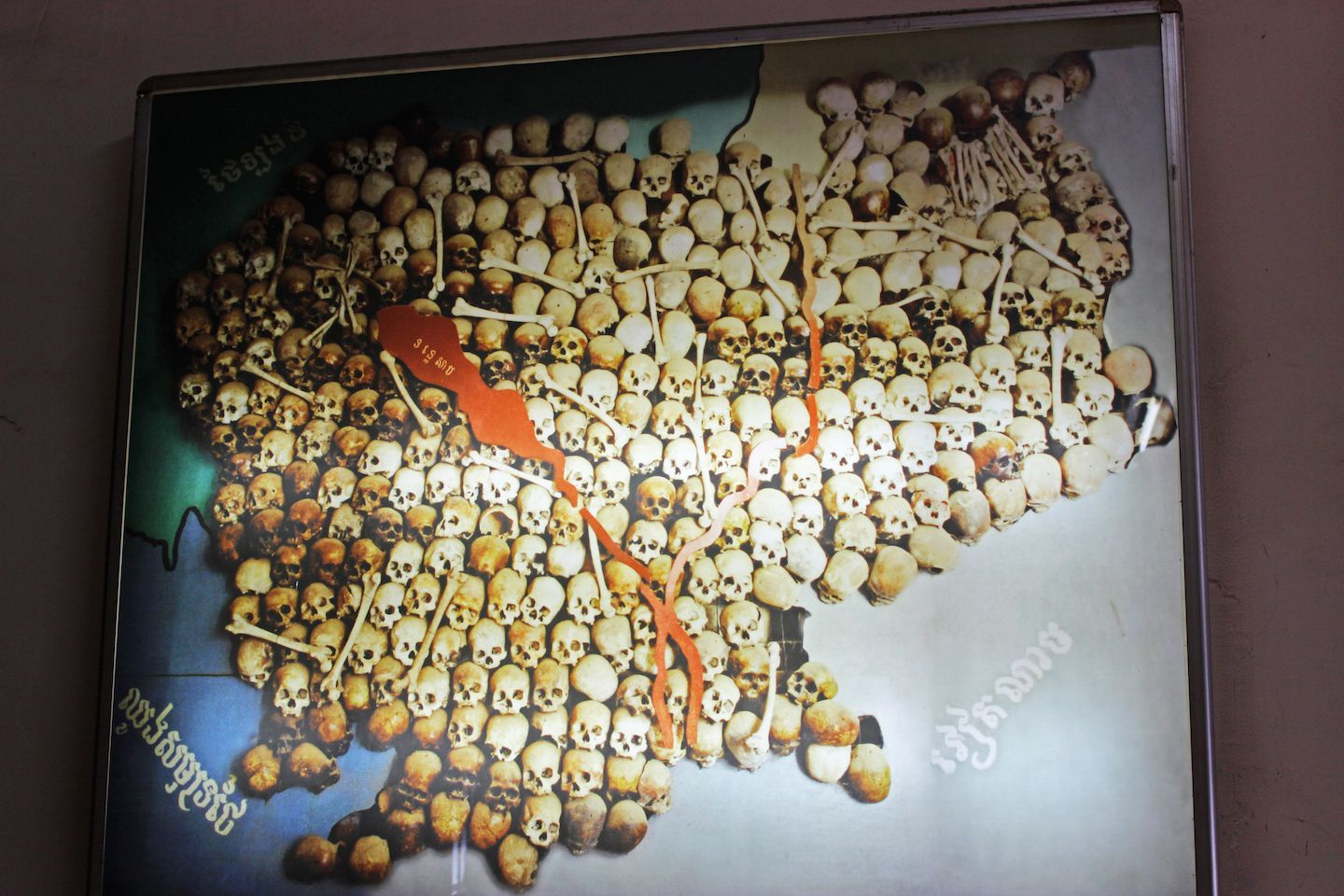
Any evidence that somebody was conspiring against the regime was enough to motivate mass arrests of the entire family. Prisoners were taken to S-21, had their pictures taken and put into cells to await interrogation. During the interrogations, innocent prisoners were often tortured and forced to confess acts of crime, even espionage for the KGB and CIA. They would then be sentenced to death.
“Keeping you is no gain, losing you is no loss.” That was one of the mottos of the Khmer Rouge regime.
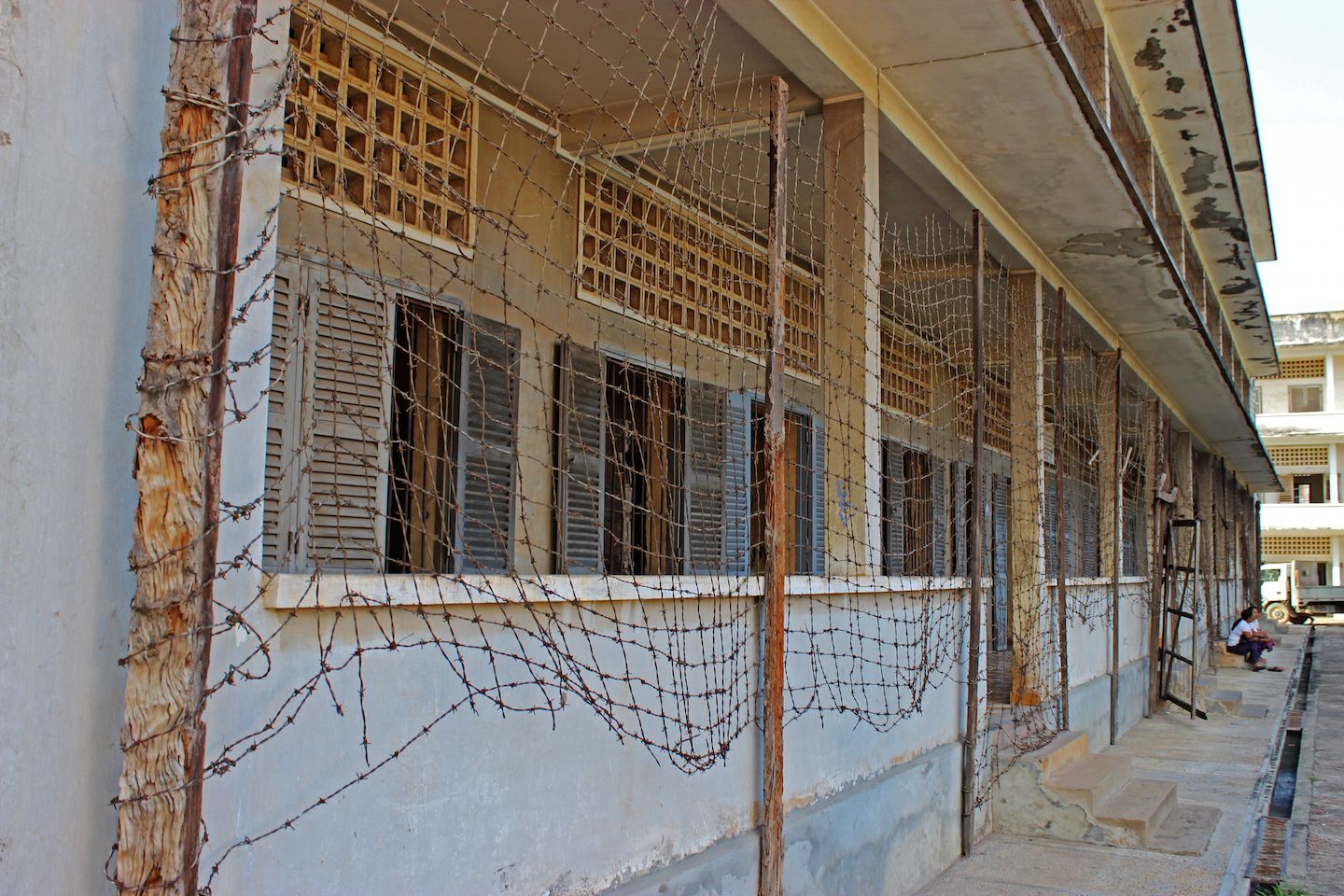
We were able to visit Buildings A, B, and C that prisoners were kept in. Building A housed “important” people, educated individuals who were once doctors and singers. The conditions worsened from Building A to B, B to C. In Building A, each prisoner had their own room. In the other buildings, rooms were further split into smaller cells separated by brick walls. We still saw blood stains in some of them. Prisoners throughout the prison showered once a month (by that I mean that the guards would spray them with water from outside the windows), they were malnutritioned and any misbehavior was punished by whipping them with an electric wire, just to name a few.

Exercise poles from the previous high school were turned into torture devices. Prisoners were hung with both hands on the poles upside down and interrogated until they became unconscious. Then they were lowered into a pot of liquid manure which would wake them up so they could continue to be interrogated and forced into false confessions.
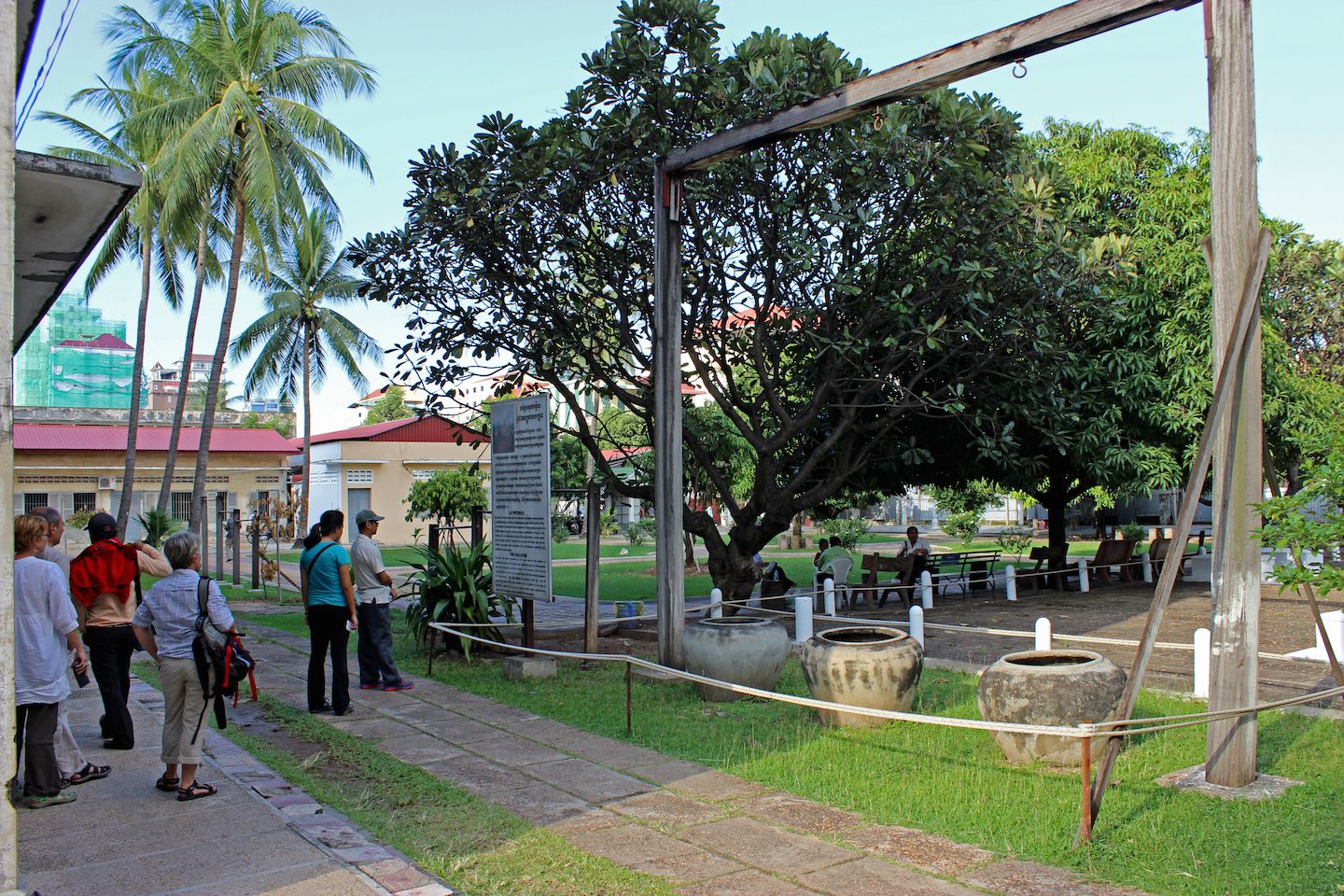
From all of 20,000 people who passed through S21, only 12 survived and were rescued in 1979 when the Khmer Rouge regime was put to an end. One of the survivors was at the prison and we had the chance to see him – we were surprised and intrigued by how he could still go back to the place where he spent the worst years of his life, as well as where his entire family was tortured and killed before his eyes.

Choeung Ek Genocide Center
One of more than 300 Killing Fields where the Khmer Rouge executed millions of prisoners, Choeung Ek is the most well-known and currently a memorial site for those atrocities. We highly recommend the audio tour offered. It was very educational and walked us through the entire area. The audio tour also contained many survivor stories that described the tortures and killings first hand. Prisoners of S21 were brought here to be executed and buried.
We walked around the many small craters, which used to be pits or grave sites where dead bodies were piled. Every few months, due to rain and shifts in the soil, more bones or teeth still surface today. Cheap tools were used as weapons – axes, bamboo poles, even the spiky leaves of palm trees. Powdered DDT were spread over the bodies in the pits to finish off those who were not completely dead as well as disguise the stench. It was terrible to stand by those graves and imagine what took place there.
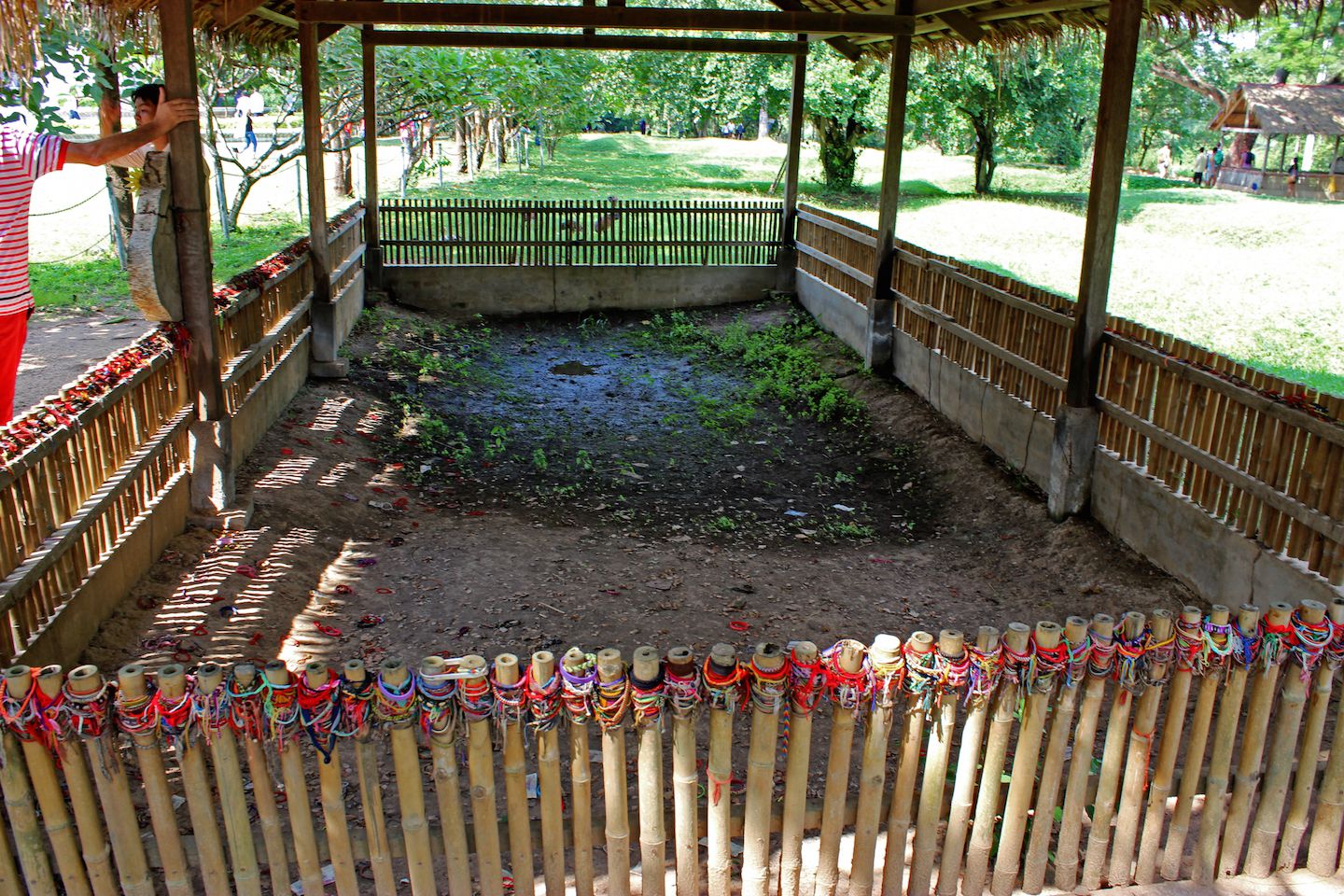
The cruelest part of the entire tour was the grave of women and babies. Right next to the grave was a tree, known as the Killing Tree, upon which Khmer Rouge soldiers would kill the babies in front of their mothers. Holding the babies’ legs, they would smash the heads against the tree before throwing them into the grave pit. It was absolutely sickening. The Khmer Rouge believed that “to dig up the grass, one must remove even the roots,” so if one member of the family was killed, everyone in the family had to be killed so that there would be no opportunity for revenge.

The executions would happen during the night; however, lights were used so the prisoners could see others being killed. Revolutionary music was blasted along with noise from a diesel generator to cover up the screams.
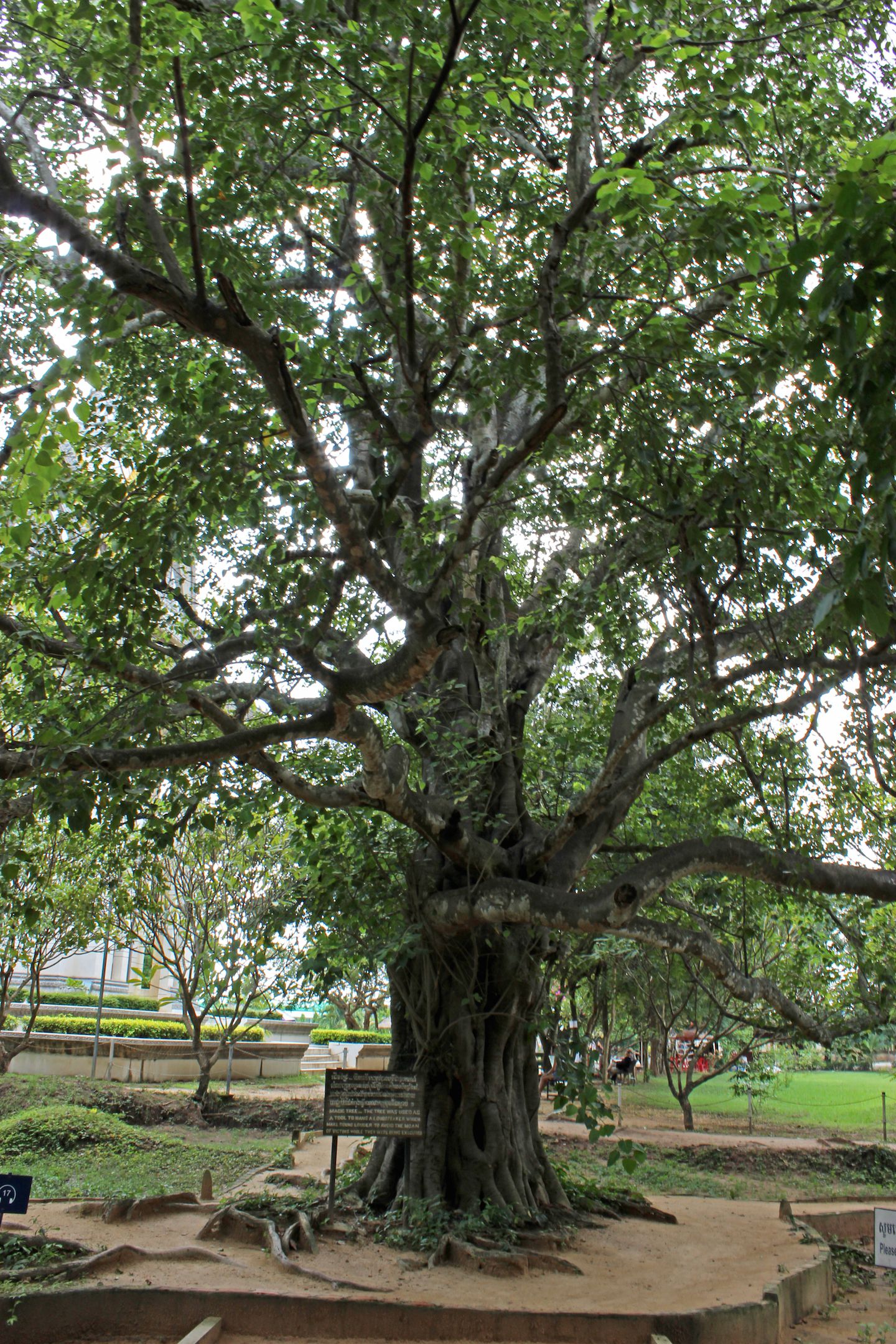
A memorial stupa marked the centerpiece of the Choeung Ek Genocide Center, where thousands of skulls and other remains were displayed in memory of what took place here many years ago. It was one thing to hear about the stories; it was another thing to see piles of human skulls, many of which indicate cause of death – a crack for a machete, a hole for a hammer… I don’t think I will ever forget that sight.

The crazy part was that no one in other parts of the world knew what was happening. Nowadays with globalization and worldwide media coverage, such a thing is unthinkable. Landmines closed the borders with Vietnam and Thailand – only diplomats could go in and out of the country. A massacre that eliminated nearly 25% of the Cambodian population was happening without anybody else in the world hearing a word about it! During that time, the Khmer Rouge still sent representatives to the United Nations in New York! They received financial aid from other countries! That part was completely ridiculous. I hope the UN is more selective these days.

The Khmer Rouge was driven out by defectors and the Vietnamese in 1979. Vietnam established the new Cambodian government that many First World countries refused to recognize for more than 20 years, as the West feared communism at that time. So even after the fall of Khmer Rouge, they and Pol Pot were still considered the leaders of Cambodia. Pol Pot died in 1998, having enjoyed a life with his wife, children and grandchildren – 3 million of his victims did not have this opportunity.

We had a small glimpse into Cambodia’s dark past, which has undoubtedly shaped Cambodia into what it is today. The entire experience was heartbreaking, but such an important part of history. It serves as a reminder that humankind should never let atrocities like this happen again. I am also reminded of how resilient the human spirit can be – the Cambodian people have not let these tragedies define their future.
For more pictures, please visit the gallery!

